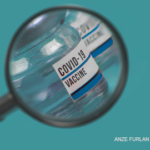
Dr. Anderson
Monoclonal antibodies act specifically against the spike protein of SARS-CoV-2, blocking the virus’ attachment and entry into human cells. To date, the U.S. Food & Drug Administration (FDA) has issued three different Emergency Use Authorizations (EUAs) for monoclonal antibody therapies that remain active: dual treatment with casirivimab and imdevimab, developed by Eli Lilly; dual treatment with casirivimab and imdevimab, developed by Regeneron; and most recently, treatment with sotrovimab (developed by GlaxoSmithKline). All three formulations are available in intravenous options, and Regeneron now has a subcutaneous option. (Note: The FDA issued another EUA, for Eli Lilly’s bamlanivimab, but later revoked it.)
According to the EUA criteria, monoclonal antibody treatments can be administered within 10 days after symptom onset in patients 12 years of age or older who aren’t sick enough to require hospital admission. “They have proved to decrease the need for hospitalization by about 70% when administered early,” Dr. Anderson noted.
Initial EUA guidelines required that patients receiving these therapies fall into specific, high-risk categories, such as being 65 years of age or older or having such medical conditions as chronic kidney disease or diabetes. Under the updated criteria, clinicians have discretion to prescribe these treatments to any patient they believe may progress and develop severe disease. “I think that’s really a game changer for clinicians,” Dr. Anderson said. Currently, monoclonal antibodies are believed to be effective against viral variants of concern.
At the end of July, the FDA also expanded its indication for the Regeneron monoclonal combination based on results from recent phase 3 data. Physicians can now prescribe this treatment as post-exposure prophylaxis for certain people exposed to an individual infected with SARS-CoV-2. The eligible group includes people taking immunosuppressants who may not have mounted an adequate immune response via vaccination.16
Dr. Anderson urged clinicians to make use of these therapies, which can be administered at hospitals, urgent care centers, mobile sites and other locations. He added, “It’s good for our individual patients. It’s also good for our very fragile, very tired and very burned out healthcare system, so that we don’t have our emergency departments flooded again with more patients.”
Rheumatologists seeking to access these treatments can check availability online. Dr. Anderson also encouraged clinicians to check availability in their local communities through academic centers or federally qualified health centers.
Ruth Jessen Hickman, MD, is a graduate of the Indiana University School of Medicine. She is a freelance medical and science writer living in Bloomington, Ind.
References



